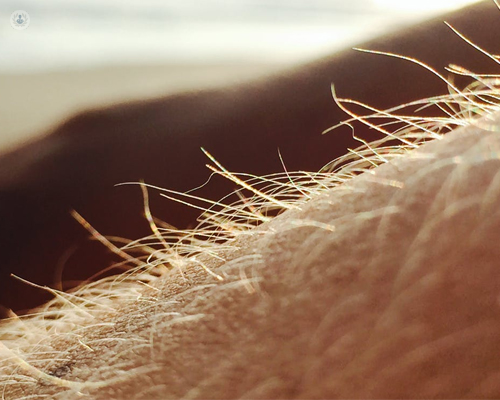Treatment for patients with scabies
Written by:Scabies is a frequent skin problem caused by a mite that acts as a parasite. People of different age, ethnicity or social group may have scabies, regardless of personal hygiene.

How scabies are spread
The scabies parasite is transmitted by skin-to-skin contact and excavates tunnels in the patient's skin. Through them they feed and lay eggs. It should be noted that it only lives in the upper layers of the skin and does not penetrate the bloodstream or other organs. After a few weeks, the patient manifests an allergic reaction that causes the typical intensely itchy rash of scabies.
How Scabies Appear
The rash may appear in the form of blackheads, urticaria, blisters or in the form of scaly or crusted nodules , and can affect any body area. Even so, injuries are more common in the hands, feet, armpits, umbilical region and genitalia. If the patient is younger than two years the lesions may appear anywhere on his or her body. However, scabies rash is often more severe in the elderly or in people with a weakened immune system.The itching and rash can be mild or very intense, depending on how the immune system responds to the mite. Each patient may have a different reaction, so some people can carry the parasite and do not present itch or rash. It is frequent to observe that in a house only one or two people have the eruption, although all have been exposed to the mite. Anyway, it is important to treat everyone who has been in contact with the parasite and not just the people who manifest the rash .
How to diagnose scabies
The Dermatologist can diagnose scabies by careful examination of the skin. In some cases a scraping of the skin is carried out in order to locate the parasite using a microscope.
Topical treatment of scabies
There are different medicines to treat scabies. 5% permethrin cream is the most common treatment for most patients. The ointment needs to be applied over the entire skin surface, from the neck to the toes, ensuring that the fold areas and spaces between the toes are well covered. Scabies usually do not affect the face, so this area is not usually treated. Anyway, the exception is children under two years, for whom the application of the cream in the whole body is recommended. The ointment is left on the skin overnight and, the following morning, is removed by a shower or a bath. The same treatment should be repeated after one week.There are other oral creams and medications, such as ivermectin , that can be used in special situations, although these treatments are not always suitable for children or pregnant women.The doctor may also prescribe other oral creams or medications to help soothe the itching and irritation of the skin. Pruritus and rash may persist for several weeks, but if the patient notices the appearance of new lumps after one month of treatment he should be re-visited with the doctor. In addition to the person with the rash, treatment should be done to all family members and close contacts. All must be treated at the same time to avoid reinfestation.The mite lives on the skin, but can also survive outside the body on clothing or bedding. That is why you need a thorough cleaning of clothing, towels, carpets, sofa covers or bedding, among others.
Steps to follow for proper treatment of scabies
• Follow medication instructions carefully• Repeat treatment in 7 days• Treat all close contacts and household members• Treat everyone at the same time• Washing clothes, bed covers and towels using hot water• Items that can not be washed can be decontaminated by dry cleaning or placed in a closed plastic bag for at least 72 hours• Vacuuming carpets, furniture, car seats and baby strollers• No fumigation needed• Pets do not need to be treated (human scabies do not affect them)


